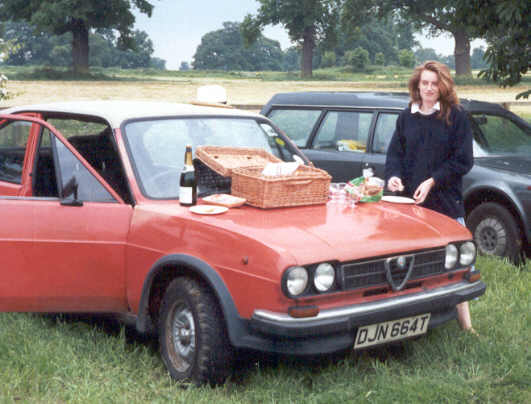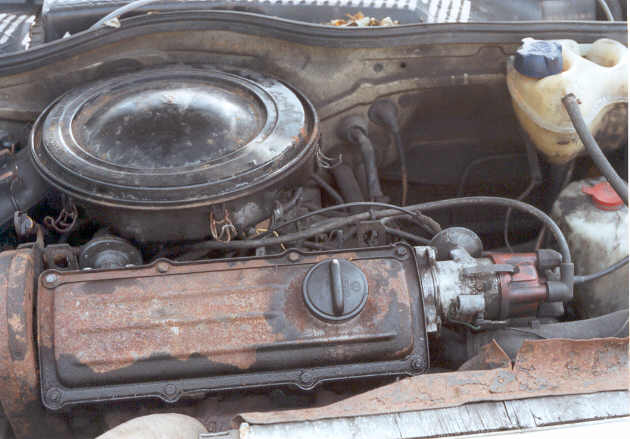![]()
The fall in used car prices over the last couple of years has had a big effect on the banger end of the market, with plenty of bargains to be had in the sub - £1000 range. So, good news for the bargain-conscious motorist, but beware - there is still plenty of rubbish out there. Below is the Bangernomics guide to nabbing a bargain, and avoiding the tarted up scrapyard fodder which someone, somewhere is hoping to sell you.
Bodywork - The most common killer of old cars is still rust. Manufacturers may now use rustproof galvanized bodyshells, but these cars have yet to filter down to the cheap end of the market. What you are looking for is structural rust. Rust in doors, bonnet and boot lid is not serious unless it leaves sharp edges (MoT failure point). Look out for evidence of rust in the sills that run under the doors, in the floorpan (lift the carpets to check if you can), around the lip of the wheelarches, near seatbelt mounts and anywhere that part of the suspension or steering bolts to the body. Holes, flaky crumbling metal or plastic body filler in any of these areas spells doom.
Look out for a straight, honest car with no evidence of fresh spray paint or underseal. Very few people can use body filler properly, so any bodged repairs should stand out a mile. Beware of a car that has just had new sills fitted. Fitting sills properly is a complex job, so most people just weld new sills on top of the rusty old ones, which isn't really good enough. Make sure that the doors open and close properly, and that the gaps around the panels are even and consistent. A car that has been in a shunt, and not been properly repaired, should be easy to spot as the panel fit will be poor.

I ignored all the above advice and bought this Alfa. The floor fell out. Learn from my mistakes. My Alfa didn't even pull the birds - that's my sister in the photo.
Mechanicals - Use your common sense. If the engine smokes, rattles, rumbles or runs rough, walk away. Remember, there are always plenty more cheap cars out there. An engine covered in oil is on its last legs, so beware of the vendor who claims he 'accidentally forgot to fit the oil filler cap'. Carefully unscrew the radiator cap and have a look inside. Any evidence of oily deposits or white froth is bad news. The same goes for creamy white gunk around the inside of the oil filler cap.

Oil everywhere - not a pretty sight. In this case the cause was a blocked crankcase breather, but don't count on being so lucky.
Pull out the dipstick and have a look. Filthy jet-black oil suggests neglect. No oil at all suggests extreme neglect.
A test drive can tell you a lot, but make sure you do a few miles. Once round the block in second gear will tell you nothing. Check that all the gears work, including fifth (if fitted) and reverse. Listen for strange groaning noises (wheel bearings), whining sounds from the gearbox or axle and engine noises that get louder as the car warms up. An engine in good condition will become quieter as it warms up; a worn one will become more noisy. Keep an eye on the temperature gauge for evidence of overheating, and watch out for the cunning vendor who disconnects the temperature gauge or oil warning light to hide a major engine problem.
Remember, at this end of the market, recorded mileage is meaningless. If the car you are looking at is low mileage, either it has been 'clocked', or it has only been used for short journeys, or it has sat around unused for long periods. You do not want to buy a car that has done any of these. Look instead at the condition of the car. Look for evidence of regular servicing, and remember that only reliable cars cover high mileages - the unreliable ones are in the garage being repaired.....
Check whether the car will run on unleaded. Lead replacement petrol (LRP) is fast disappearing from petrol stations around the country, it is more expensive than unleaded, and the whole point of buying a cheap car is to save money. Don't rely on the vendor's word on this point - after all, if the car burns out its exhaust valves two months from now, that is not his problem, is it? There shouldn't be too many LRP burners left on the roads, but be very wary of pre-1990 Fords, BL products and anything that doesn't have an overhead camshaft.
Safety first - brakes, tyres, steering and suspension are all crucial to your future well-being. Check them. Check that tyres have plenty of tread, that they are all the same size, and that there is a spare. If the car has four good tyres, all the same make, and from a manufacturer you have heard of, you are probably onto a good thing. Old cars can feel tired and sloppy to drive, but if the car wanders across the road, or the suspension clunks and groans, or the brakes will not pull the car up in a straight line, there is something far wrong with it. The MoT test should in theory pick up any significant problems in these areas, but do not take a fresh MoT as a guarantee that the car is free from faults.
Electrics - cars have steadily become more complex over the years, and sorting out electrical faults can cost serious money. Check that everything works as it should, including the heater fan. On most modern cars, changing the heater fan involves removing the entire dashboard to get to it.
Beware of cars with lots of additional wiring added by previous owners under the bonnet or behind the dashboard. Tracing faults in home-brewed wiring installations is just about impossible, and badly fitted wiring is likely to be a fire hazard.
Be sceptical - do not fall in love with the car you are looking at. Once you decide that this is the car you have always wanted, you are ready to be done up like a kipper by the vendor. Selling used cars seems to bring out the dishonest side in people, so don't take anything the vendor tells you at face value. Buy the car on its own merits, not on what the vendor would like you to believe. Above all, check the paperwork carefully. Make sure the chassis number on the car matches the one on the logbook and MoT certificate, and if the paperwork looks odd, walk away. Faking documents for stolen cars is a growth industry.